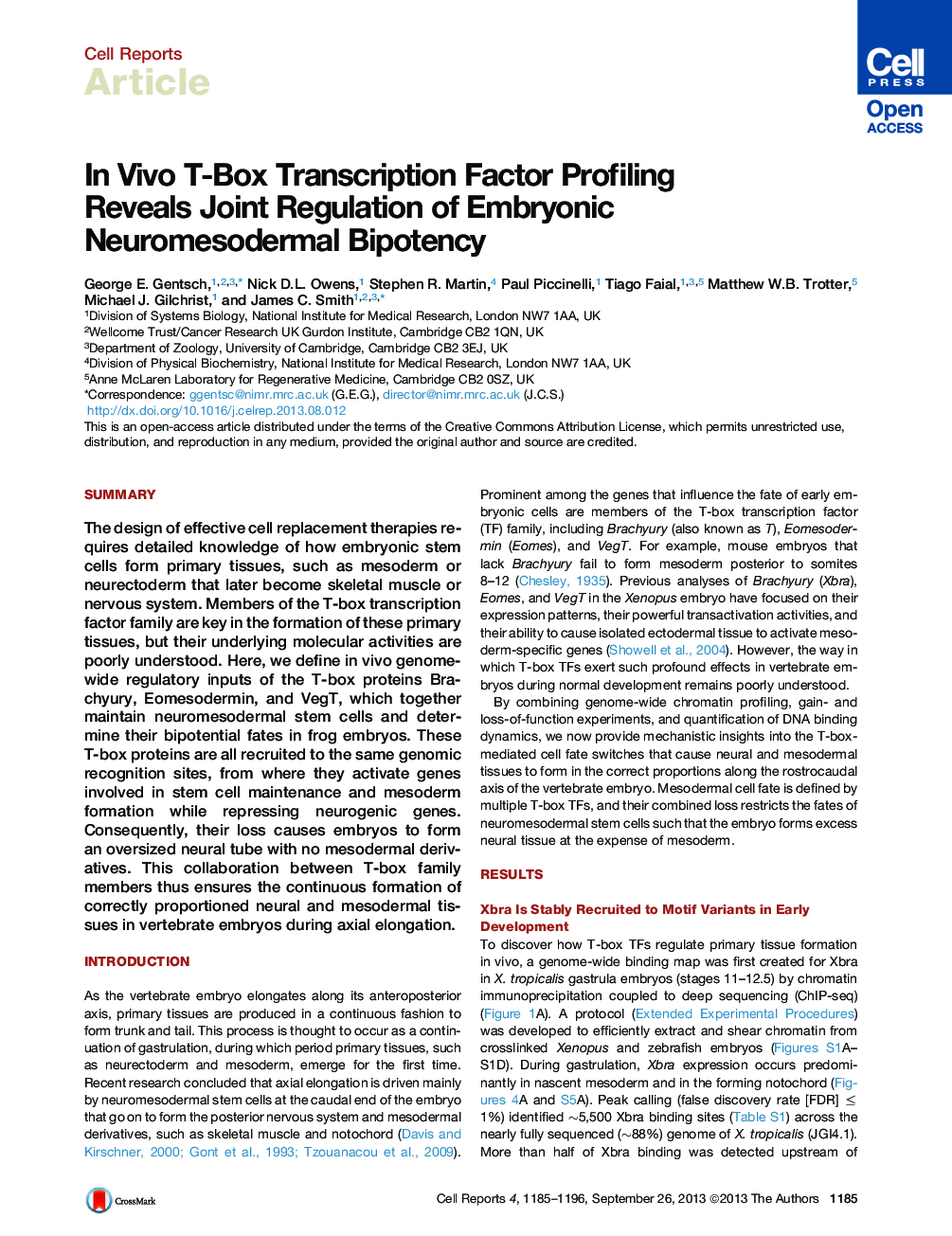| Article ID | Journal | Published Year | Pages | File Type |
|---|---|---|---|---|
| 2042017 | Cell Reports | 2013 | 12 Pages |
•The T-box factors Eomes, VegT, and Xbra largely bind the same DNA binding sites•They control stem cell differentiation into neural or mesodermal tissue in vivo•Joint loss of T-box factors entirely prevents mesoderm formation in vertebrate embryos•Promoter-proximal T-box factors recruit RNA Pol II for transcriptional activation
SummaryThe design of effective cell replacement therapies requires detailed knowledge of how embryonic stem cells form primary tissues, such as mesoderm or neurectoderm that later become skeletal muscle or nervous system. Members of the T-box transcription factor family are key in the formation of these primary tissues, but their underlying molecular activities are poorly understood. Here, we define in vivo genome-wide regulatory inputs of the T-box proteins Brachyury, Eomesodermin, and VegT, which together maintain neuromesodermal stem cells and determine their bipotential fates in frog embryos. These T-box proteins are all recruited to the same genomic recognition sites, from where they activate genes involved in stem cell maintenance and mesoderm formation while repressing neurogenic genes. Consequently, their loss causes embryos to form an oversized neural tube with no mesodermal derivatives. This collaboration between T-box family members thus ensures the continuous formation of correctly proportioned neural and mesodermal tissues in vertebrate embryos during axial elongation.
Graphical AbstractFigure optionsDownload full-size imageDownload as PowerPoint slide
